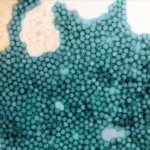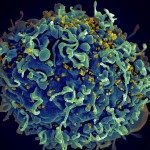About
About the Nanopore User Group:
The Nanopore User Group at Institut Pasteur was established in 2019 with the primary goal of fostering collaboration, sharing knowledge, and advancing the application of Oxford Nanopore Technologies (ONT) sequencing for the detection, diagnosis, and characterization of pathogens of public health importance. The group operates within Institut Pasteur, a world-renowned research institution dedicated to infectious diseases and microbiology research.
Mission and Objectives:
- Knowledge Sharing: The group’s main objective is to facilitate the exchange of expertise, developments, and bioinformatics tools related to ONT sequencing. By sharing experiences and insights, researchers can harness the full potential of this cutting-edge technology in their work.
- Equipment and Resource Sharing: The group aims to promote the efficient utilization of ONT sequencing equipment available at the Biomics platform of Institut Pasteur. By mutualizing efforts, researchers can optimize resources and minimize redundant work.
- Promoting Nanopore Technology: Raising awareness about the potential applications of Nanopore sequencing is a key focus of the group. By showcasing success stories and available services at Institut Pasteur, the group encourages researchers to explore and utilize this technology for their research.
- Improving Communication: Enhancing communication between researchers who use Nanopore sequencing at Institut Pasteur is essential for fostering a collaborative and supportive environment. The group provides a platform for researchers to interact, discuss ideas, and troubleshoot challenges.
Inter-Departmental Collaboration:
The Nanopore User Group is an inter-departmental initiative that brings together researchers from several National Reference Centers, WHO collaborating centers, the Biomics platform, and various research laboratories. This collaborative approach enables a multidisciplinary perspective on applying ONT sequencing, particularly in the context of microbiology research and public health applications. By pooling expertise and resources, the group aims to accelerate progress in the field and tackle important challenges in infectious disease research.
- Department of Virology: Evolutionary Genomics of RNA Viruses, Virus Sensing and Signaling, Virus and RNA Interference
- Department of Genomes and Genetics: Biomics
- Department of Global Health: Biodiversity and Epidemiology of Bacterial Pathogens, Enteric Bacterial Pathogens, Environment and Infectious Risks, Lyssavirus Epidemiology and Neuropathology
- Department of Cell Biology & Infection: Biology of Infection
- Collection of Institut Pasteur (CIP)
- NRC E. coli, Shigella Salmonella and WHO-CC for Salmonella
- NRC Whooping Cough and other Bordetella infections
- NRC Corynebacteria of the diphtheriae species complex
- NRC Viruses of Respiratory infections (including influenza and SARS-CoV-2)
- NRC Enterovirus and parechovirus
- NRC Vibrio and Cholera
- NRC and WHO-CC Rabies
- NRC and WHO-CC Listeria
- NRC Laboratory for Urgent Response to Biological Threats (CIBU)
- WHO-CC Epidemiology & macro-evolution of polioviruses and non-polio enteroviruses
- P2M (Mutualised Platform for Microbiology – PIBnet)
Meetings and Activities:
The group conducts regular meetings every two months, which are currently held online through Teams. These meetings serve as a forum for researchers to present their work, share results, and discuss troubleshooting strategies. Online seminars on relevant topics are organized to keep members informed about the latest advancements in Nanopore technology and its applications.
In the future, the group intends to organize in-person events and hands-on workshops, providing opportunities for practical training and skill development related to Nanopore sequencing. These events will further promote knowledge exchange and collaboration among members.
Inclusivity and Participation:
The Nanopore User Group welcomes participation from researchers at all levels of experience. Whether individuals are seasoned Nanopore users or are just curious about the technology, they are encouraged to join the group’s activities. Creating an inclusive environment ensures that newcomers can get started with the technology, and experienced users can continue to enhance their skills and share their expertise.




















































